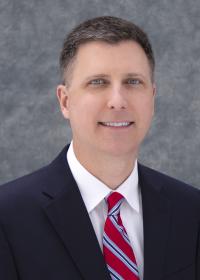
Using Telemedicine To Make Accurate, Timely Diagnoses: What We Still Need To Learn
AUG
7
2020

Long before the COVID-19 crisis, AHRQ began funding research that examined the use of telemedicine to improve access to and delivery of healthcare. Research showed telemedicine to not only be effective at connecting practitioners to patients or even other clinical experts, but to also be an efficient and satisfactory mode of care.
Today, however, the risk of contracting COVID-19 has transformed telemedicine from an attractive option to a necessity for delivering timely and safe healthcare. And with the stepped-up demand, AHRQ recognizes the pressing need to study telemedicine's efficacy for diagnosis, a crucial component of patient care.
As an important step to further that effort, AHRQ has developed a new issue brief: Telediagnosis for Acute Care: Implications for the Quality and Safety of Diagnosis. The brief defines telediagnosis as "the co-production of an accurate and timely explanation of the patient's health problem through remote interactions, including the clear communication of that explanation to the patient through these interactions."
Beyond that definition, the brief advances a list of potential prospects for how telediagnosis can support safe and effective care in a time when face-to-face encounters are not ideal. As one example, the brief notes that telemedicine visits may facilitate engagement not only with patients, but also with family members who may share helpful insights. Video visits may also offer important information about a patient’s living environment.
The brief also identifies potential pitfalls and challenges that need more study. A telediagnosis session may not capture incidental findings that might otherwise be detected during an in-person visit. Some patients may lack access to the internet or video chat tools. If patients are using a shared computer in a public place, such as the library, they may lack privacy to discuss their medical issues. Additionally, some platforms cannot be made compliant with the Health Insurance Portability and Accountability Act, which makes a patient’s personal medical information vulnerable to hacking.
We already know that telemedicine has emerged as a useful alternative to in-person medical visits for rural and elderly populations. And we also know that COVID-19 increases the risk of diagnostic errors. A recent article by my colleagues Tejal Gandhi, M.D., with whom I co-chair the National Steering Committee for Patient Safety  , and AHRQ grantee Hardeep Singh, M.D., outlines eight types of diagnostic errors anticipated during the COVID-19 era. A new primer from AHRQ's Patient Safety Network highlights principles of diagnostic error and improving diagnostic accuracy related to COVID-19.
, and AHRQ grantee Hardeep Singh, M.D., outlines eight types of diagnostic errors anticipated during the COVID-19 era. A new primer from AHRQ's Patient Safety Network highlights principles of diagnostic error and improving diagnostic accuracy related to COVID-19.
In addition, our colleagues at the Patient Centered Outcomes Research Institute and the Society to Improve Diagnosis in Medicine are already working on a project on patient safety and telediagnosis. But more needs to be done.
In a recent blog post, AHRQ Director Gopal Khanna, M.B.A., highlighted the burgeoning use of telementoring, which allows primary care providers to consult with medical specialists, adding critical, real-time knowledge to the diagnostic and treatment processes. A Perspectives on Safety from AHRQ's Patent Safety Network, meanwhile, has provided important insights into telehealth as a tool for ensuring both patient and provider safety.
The use of telemedicine is growing at the same time it is evolving rapidly. These changes will make the healthcare ecosystem increasingly reliant on telemedicine for several aspects of care, including diagnosis. Now is the time for the research community to come together and help ensure telemedicine is as safe and effective as possible.
Dr. Brady is Director of AHRQ's Center for Quality Improvement and Patient Safety.





















.png)









No hay comentarios:
Publicar un comentario